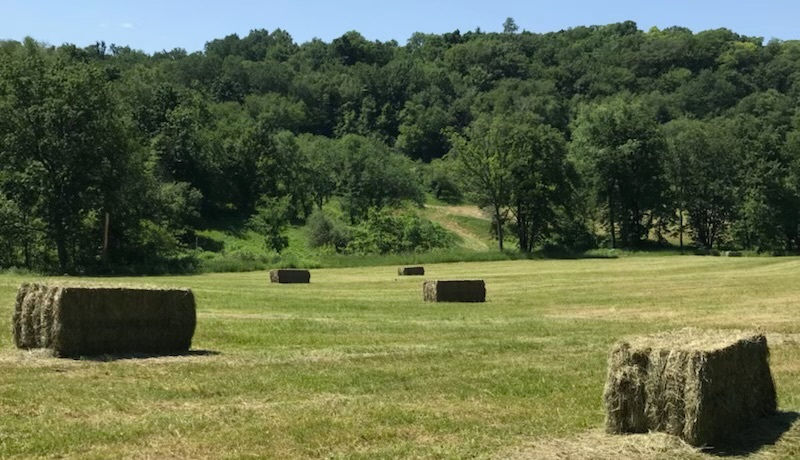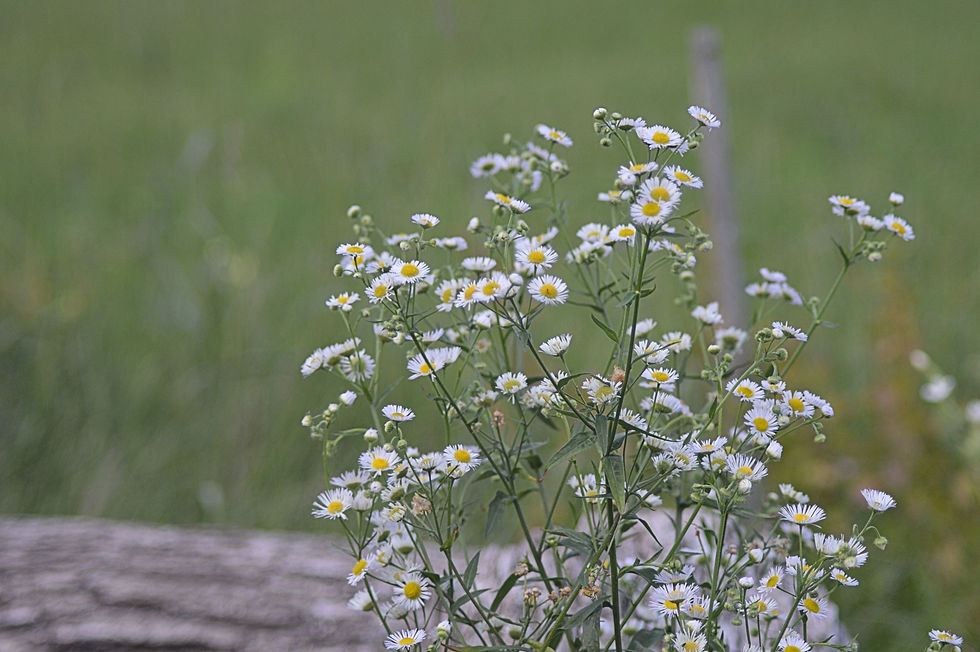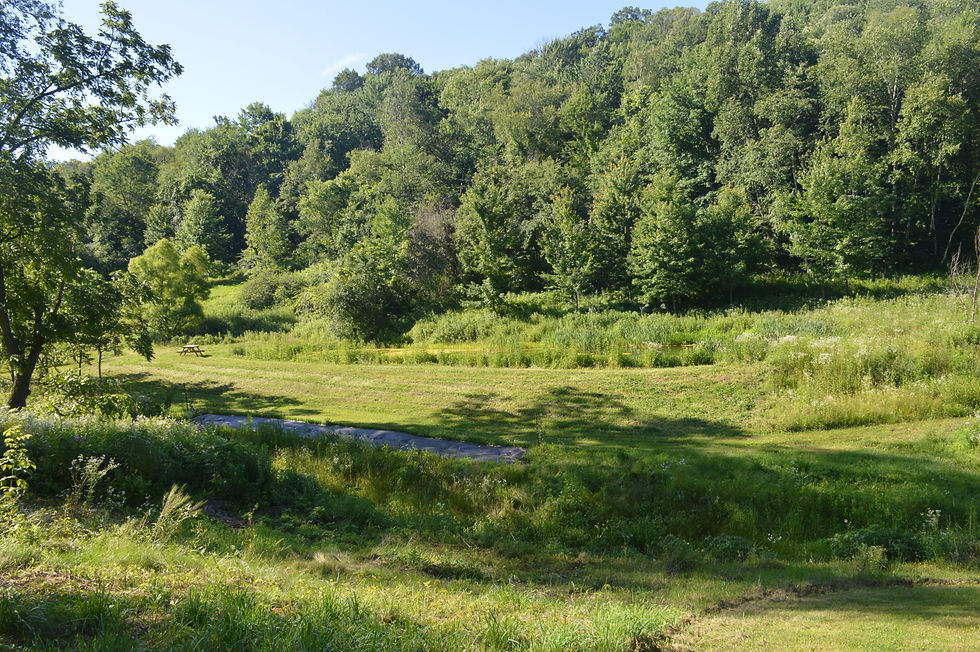The Ag Field (Part 3 of 4)
- Rebecca Clancy
- Apr 14, 2022
- 2 min read

BigDaddy was nearly whipped into shape. The ditch was covered with clover and hairy vetch seed. The trees and shrubs were planted on both BigDaddy as well as the smaller swales. That left BigDaddy’s mound. It was scraped and smoothed, but it was exposed. The pioneer species would be back if we did not act quickly and decisively.
That’s when it hit me….The Brilliant Idea. When confronted on the farm by various challenges and problems, we normally embark upon a number of false starts. This is because we try to force solutions ahead of inspiration. Inspiration can take its sweet time coming, but it inevitably does. And when inspiration comes, with it comes The Brilliant Idea. The Brilliant Idea was to roll commercial grade landscape cloth down the length of BigDaddy’s mound. Recall that BigDaddy is 650 feet long. That’s a lot of commercial grade landscape cloth. Fortunately, it comes in 300 foot rolls.
Now I realize that landscape cloth has its detractors, but it sometimes feels like its detractors are just passing along what they’ve read on the internet, after the fashion of the Game of Telephone. I have had great luck with cloth. Its benefits are undeniable. You don’t disturb the soil. Disturbing the soil in a permaculture no-no. Cloth traps organic material under it which fertilizes the plants, and best of all, it prevents weeding altogether. I used landscape cloth in my kitchen garden last summer, and I kid you not. No weeding. None.
And the detractors’ objections fall apart upon scrutiny. One objection is that it is ugly, to which I reply, “Beauty is in the eye of the beholder.” I don’t find it ugly. It reminds me of Ad Reinhardt’s Abstract Painting, only longer. And that’s in the MoMA. Another objection is that it prevents compost from reaching the soil, to which I reply, “Put the compost under not over the cloth.”
At any rate, we covered BigDaddy’s mound with commercial grade landscape cloth and created a 4,000 square foot growing space. What then to plant? Lavender was nonnegotiable. It attracts pollinators, is perennial, but here’s the cincher. It repels deer. So we planted lavender, and lots of it. Anything else was negotiable, just so long as it was perennial. We settled on Polka Raspberries, simply because we love to eat them, and they are easy to freeze. On either end of the cloth we planted rhubarb patches.
Before moving onto the denouement, The Ag Field - Part 4, allow me to digress and extol the merits of freezing as a way of preserving food. Canning is the main alternative to freezing, but my own experience of canning is that it is equipment and labor intensive. It’s what they did before they had freezers. I realize that in so claiming I lay myself open to the charge of cloddishness. It’s akin to saying, “Why bother to quilt? There are bedspreads at Walmart.” Yes, I realize that canning is a domestic art form. Yes, I realize that if everyone thought like me it would become like so many practices on the farm – a lost art. But at this stage of the game, efficiency prevails. We freeze it all - raspberries, strawberries, green beans, tomatoes, pesto, eggplant paste, etc. - and eat it all winter….(To be continued.)








Comments